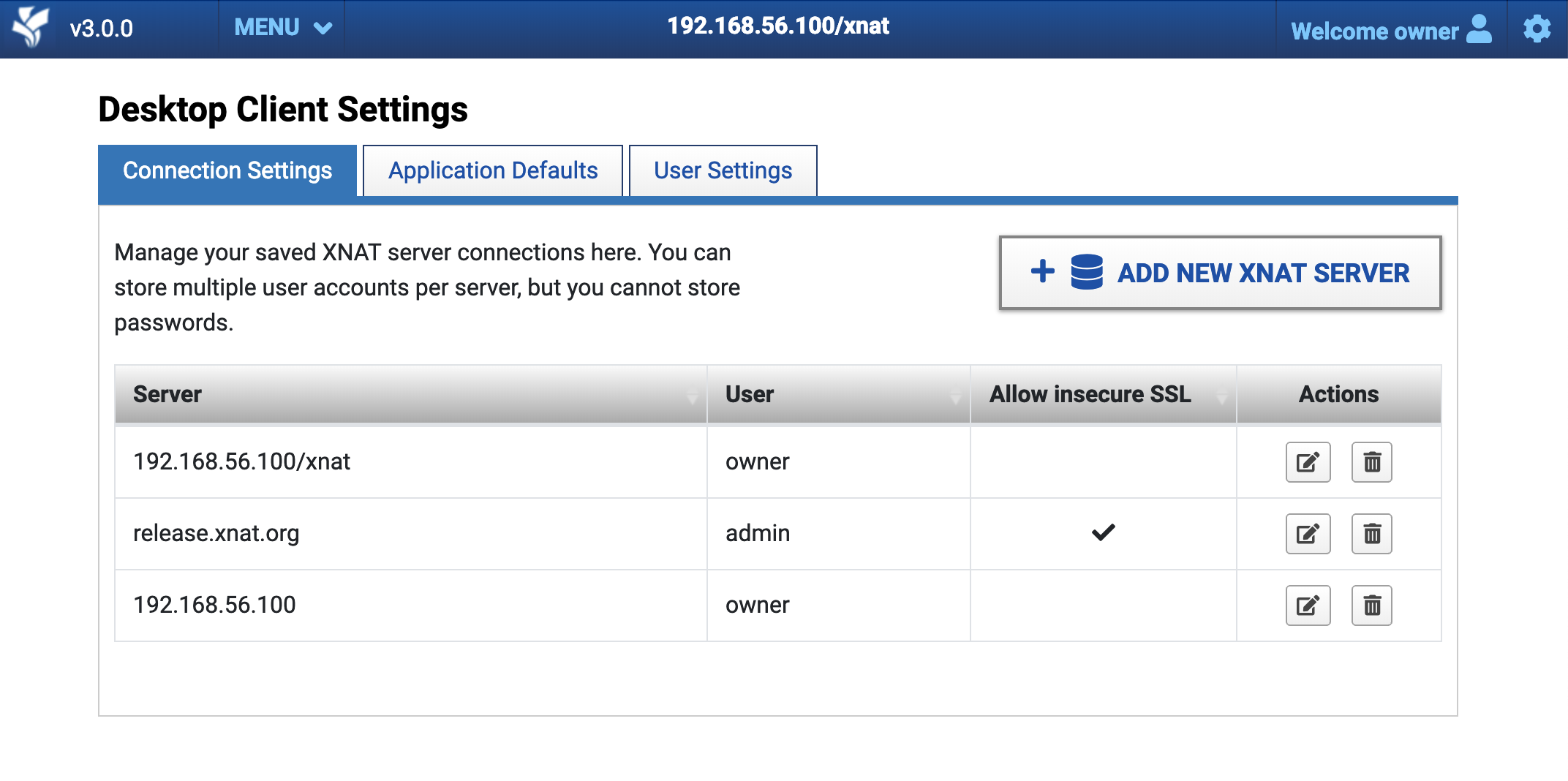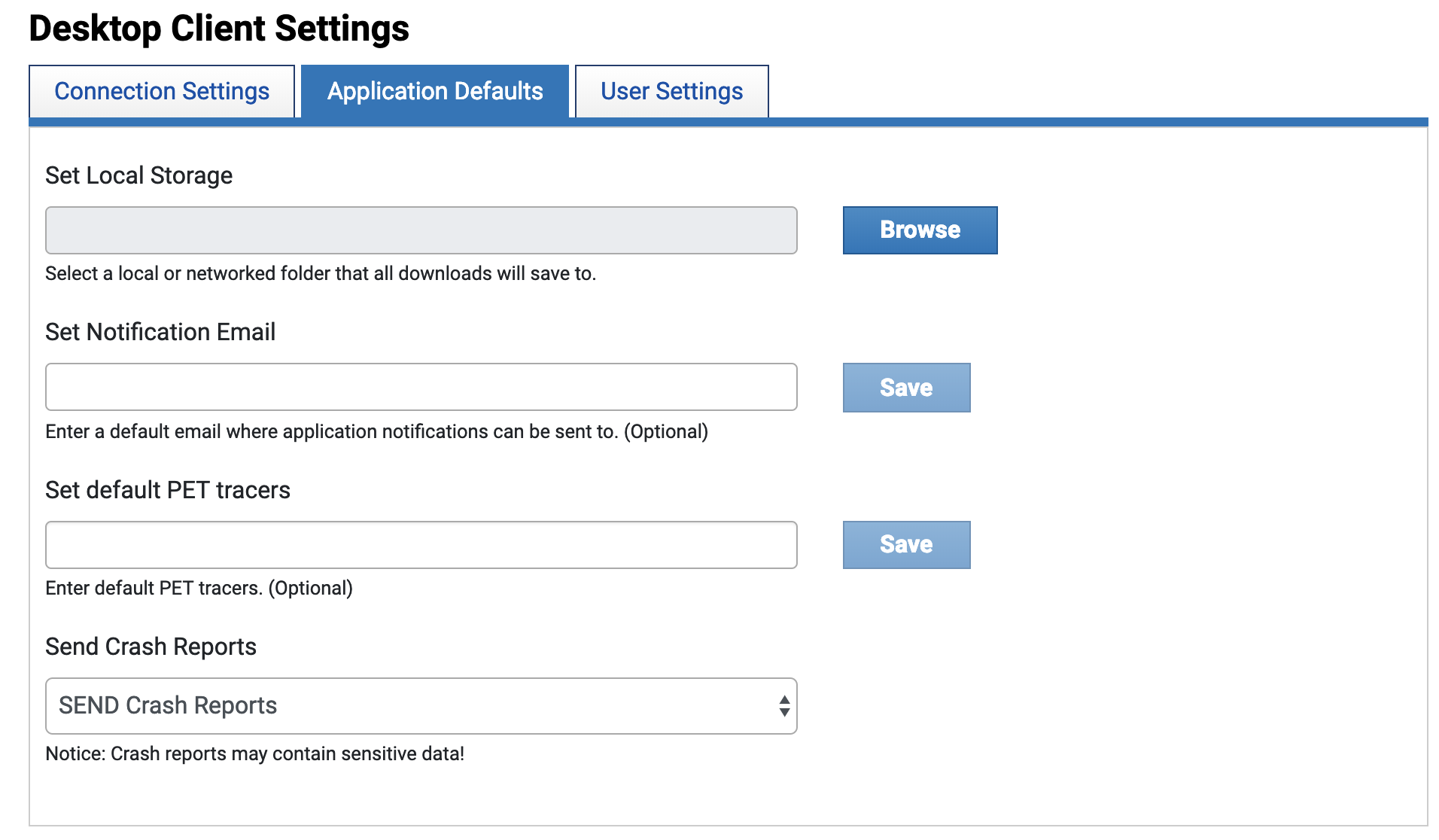Application Settings
There are several global settings that can be managed in the Application Settings dialog. To access this screen, click the "gear" icon in the upper right of the top navigation bar.

Managing Logins
The Desktop Client never saves XNAT account passwords, and always requires users to reauthenticate in order to log in.
All logins that have ever been established in your Desktop Application are saved and can be managed from this screen. This includes any logins that were established via an authenticated token to enable a download process. You can easily edit or remove any of these stored logins via the "Edit" and "Delete" icons in the Actions column of this table. You can also add a new XNAT server login if you like.
Note: the Login screen of the application does not try to set a default XNAT – it lists the logins in the order that those XNAT accounts were last accessed.
Setting Application Defaults
Additional default settings can be configured in the "Application Defaults" panel.

A note on setting PET Tracers

When entering PET Tracers, the input field works like a "Tag" entry UI. You can type any value, and hit return or enter to enter that value as a new tag. All tags will be saved when the user clicks the "Save" button. Tracers can also be removed by clicking the "X" icon in each tag, or by hitting the delete key with your cursor in the input field.
Setting User Defaults
User defaults are specific to your logged-in user account for a specific XNAT connection. If you are not logged in to an XNAT, you will not see these settings

A note on changing the Upload Mode
The XNAT development team has done extensive testing and in nearly all cases, streaming files into a ZIP for upload is more stable and performant than bundling a ZIP locally before transferring it to your XNAT server. Notably, the streaming ZIP service handles larger bundles of files, and it also enables better support for pausing and resuming uploads. We recommend using the streaming method unless specifically required by your XNAT administrator.